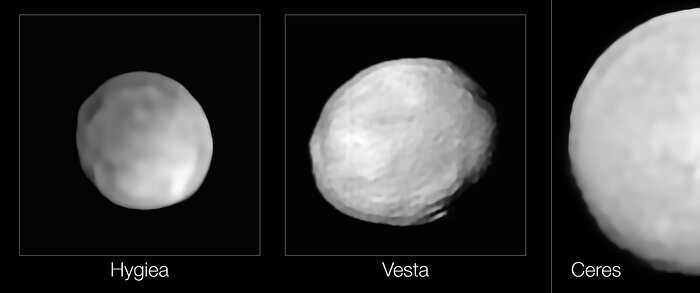SPHERE images of Hygiea, Vesta and Ceres
New observations with ESO’s SPHERE instrument on the Very Large Telescope have revealed that the surface of Hygiea lacks the very large impact crater that scientists expected to see on its surface. Since it was formed from one of the largest impacts in the history of the asteroid belt, they were expecting to find at least one large, deep impact basin, similar to the one on Vesta (bottom right in the central panel).
The new study also found that Hygiea is spherical, potentially taking the crown from Ceres as the smallest dwarf planet in the Solar System. The team used the SPHERE observations to constrain Hygiea’s size, putting its diameter at just over 430 km, while Ceres is close to 950 km in size.
Credit:ESO/P. Vernazza et al., L. Jorda et al./MISTRAL algorithm (ONERA/CNRS)
About the Image
| Id: | eso1918b |
| Type: | Collage |
| Release date: | 28 October 2019, 17:00 |
| Related releases: | eso1918 |
| Size: | 3513 x 1471 px |
About the Object
| Name: | Ceres, Hygiea, Vesta |
| Type: | Solar System : Interplanetary Body : Dwarf planet |
| Category: | Solar System |
